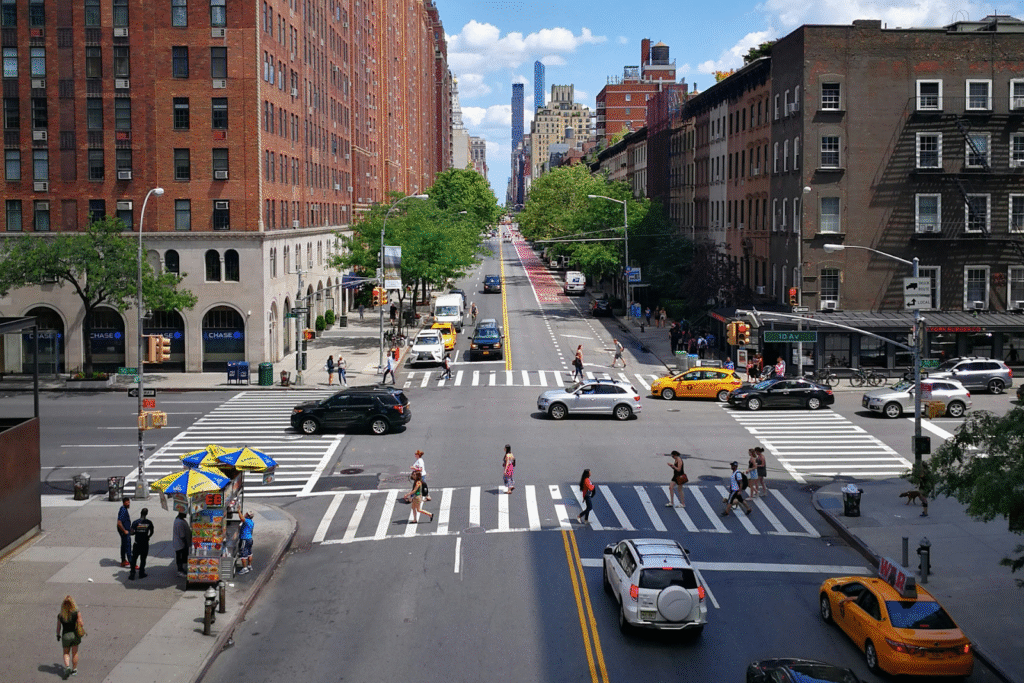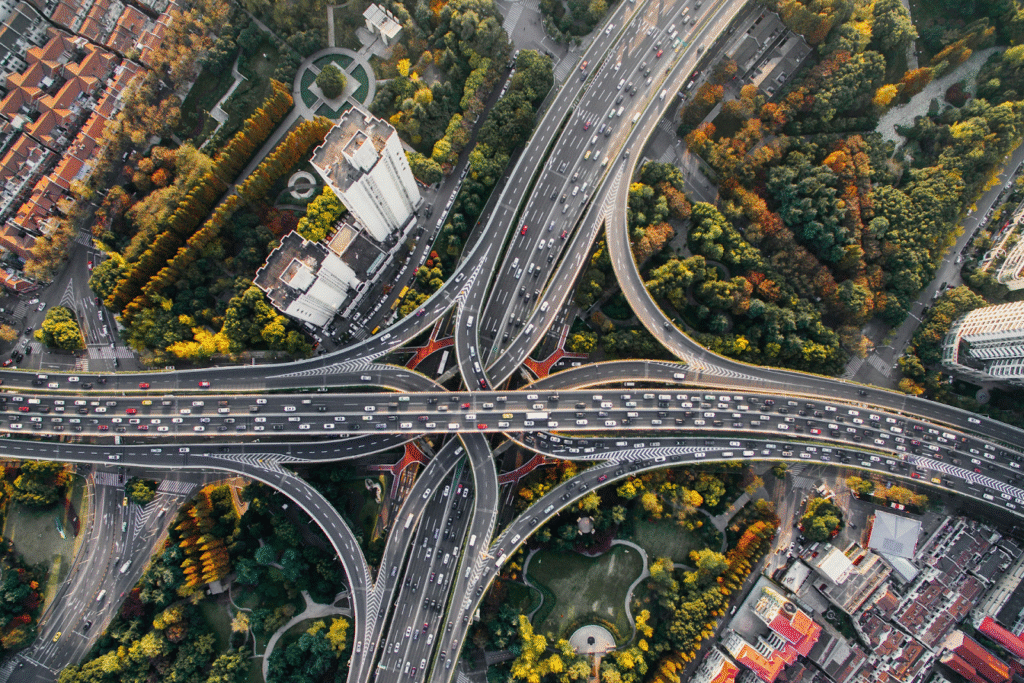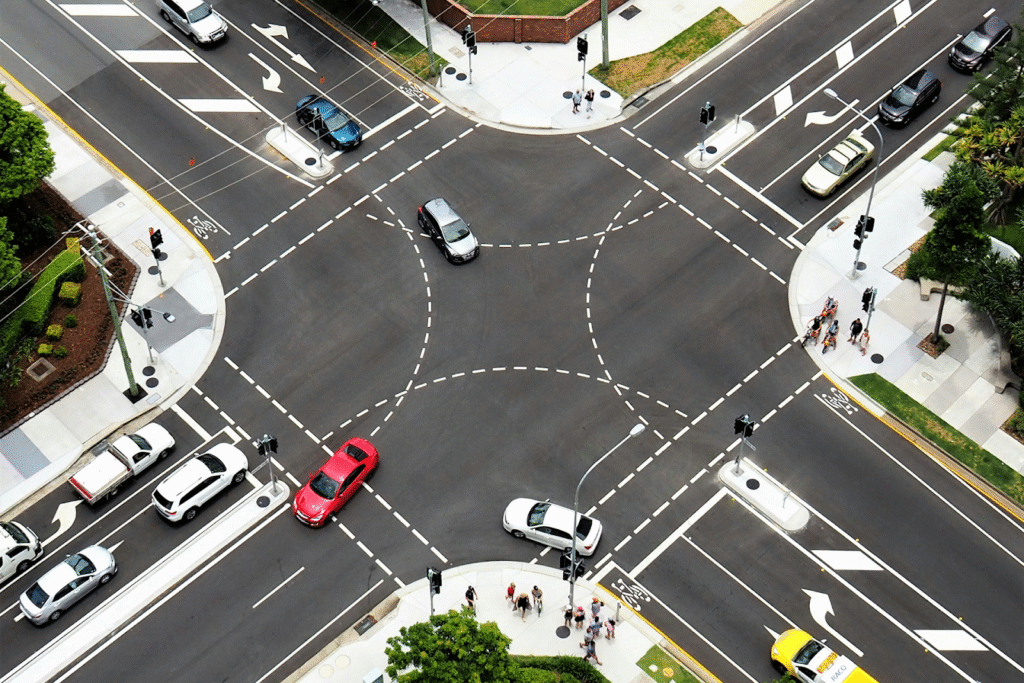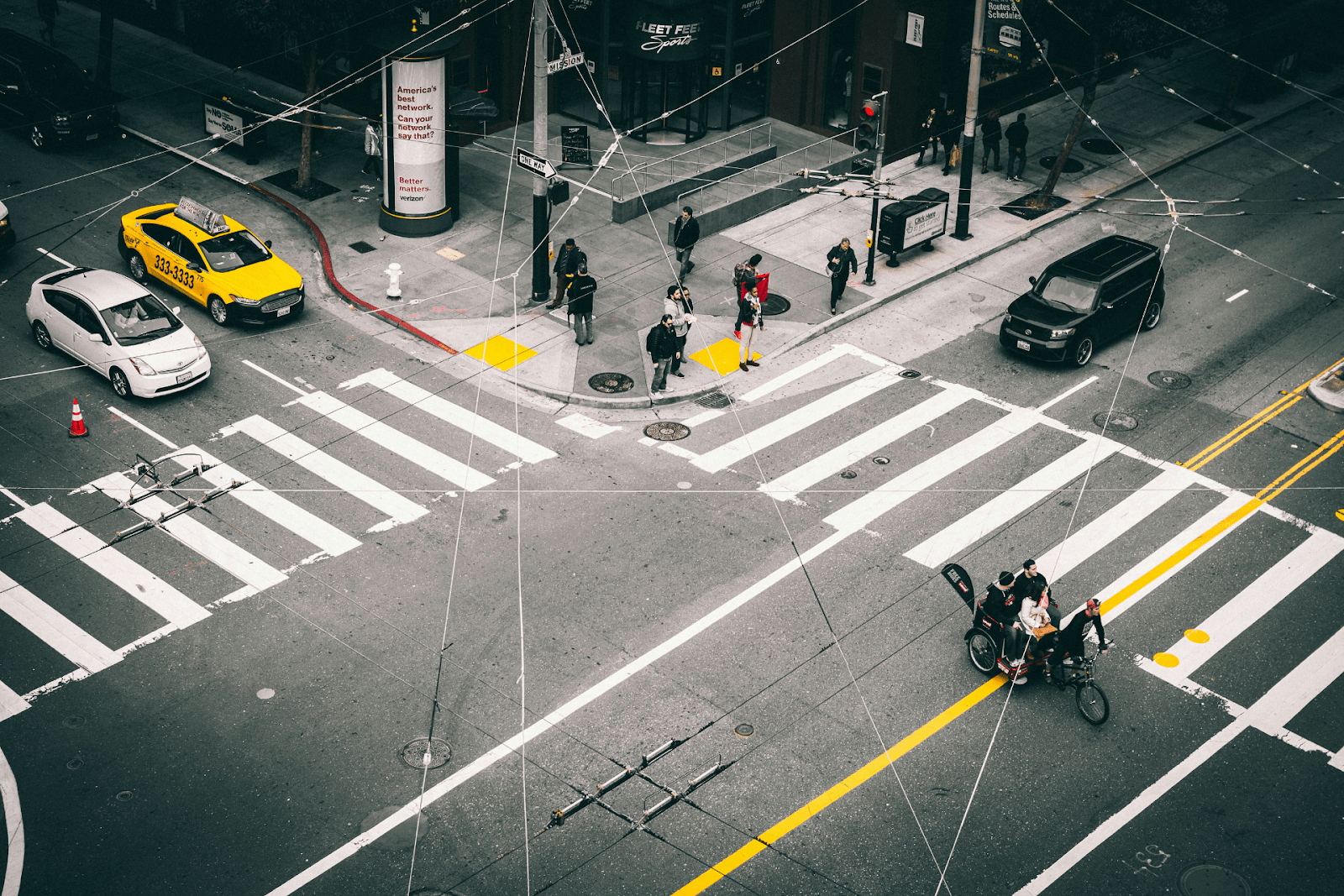Modernizing legacy traffic systems doesn’t have to mean starting from scratch. With a traffic signal monitoring system from Miovision, municipalities can upgrade existing infrastructure to deliver real-time visibility, improve signal performance, and enhance road safety, all while reducing costs and maintenance time.

Why Modernize Legacy Traffic Systems
With a growing population, more cars on the road, and more buildings, traffic jams have increased. At first, traffic signals depended on manual checks, regular maintenance, and local control. This approach worked when populations were smaller and travel patterns were easy to predict. Now, traffic jams, different types of transport, and higher safety needs require quicker insights and better control.
Many cities still depend on legacy traffic management systems, which create these key pain points:
- Manual data collection limits the ability to respond proactively
- There’s no real-time insight into signal operations or failures
- There’s extra work due to outdated hardware
- Inconsistent performance across intersections increases wait time
- Outdated hardware limits integration capabilities with new technology

A smart traffic signal monitoring system delivers an immediate modernization path, enabling municipalities to upgrade functionality and visibility without costly system replacements.
Miovision provides a practical, cost-effective approach that connects with existing controllers and field devices. It offers immediate insights and performance enhancements throughout the network, allowing engineers and city officials to update traffic patterns, boost efficiency, increase cost savings, and improve safety measures.
What Is a Traffic Signal Monitoring System?
The Miovision traffic signal monitoring system is an intelligent platform that provides remote and real-time oversight of signal operations at intersections and throughout urban road networks. It connects directly to existing hardware (controllers, vehicles, and detection systems) through secure communications networks.
By automatically collecting continuous traffic signal performance data, the system empowers engineers to detect issues early, adjust timing efficiently, and improve emergency vehicle response times, all from a centralized management interface. A monitoring system turns disconnected intersections into a connected network without replacing what’s already working. It pinpoints areas of improvement and offers solutions for a safer city.
Legacy Systems Vs. Miovision Solutions
| Feature | Legacy Systems | Miovision Solutions |
| Data Access | Manual functions and limited visibility | Live, remote monitoring with an accessible platform |
| Maintenance | More labor-intensive | Proactive alerts and fewer site visits |
| Signal Optimization | Infrequent updates | Continuous performance improvement |
| Safety | Limited incident responses | Faster detection with improved outcomes |
| Integration | Localized | Connects with existing hardware and V2X |
Benefits of Implementing a Traffic Light Monitoring System
Upgrading your city with modern traffic management unlocks measurable improvements in operations and mobility. Check out these benefits:
- Real-time monitoring for proactive issue detection identifies malfunctioning equipment before traffic disruptions occur.
- Improved traffic flow and reduced congestion due to data-driven signal timing.
- Enhanced road safety and emergency response time with Emergency Vehicle Preemption.
- Reduced maintenance and energy costs by lowering operational responsibilities and extending the life of the existing infrastructure.

Key Features That Drive Modernization and Road Efficiency
Traffic light monitoring systems help cities grow at their own speed with innovative, long-lasting features:
- Real-time data collection and performance analytics to understand how intersections work and where they can be improved.
- Adaptive traffic signal control and automation which responds to real-time traffic conditions, including vehicles, cyclists, and pedestrians.
- Remote access and centralized management to respond to insights from anywhere.
- Integration with other smart cities and V2X systems to build smarter roadways for connected and autonomous vehicles.
How to Modernize for Road Safety: A 5-Step Approach
Step 1: Assess existing infrastructure
Review current signal operations, controller compatibility, and communication coverage. Identify pain points, areas for improvement, and lack of visibility.
Step 2: Identify integration opportunities
Select priority intersections where monitoring will have the greatest impact. Look for areas with delays or higher accident reports.
Step 3: Implement data-driven monitoring
Deploy new hardware and connect live data streams to the software platform.
Step 4: Train staff and optimize performance
Train platform users for optimal use. Use insights to improve timing strategies, reduce delays, and enhance safety.
Step 5: Scale across the network
Expand modernization efforts throughout other problematic areas to reach Vision Zero.
Case Studies: Modernization in Action
In Bellingham, Washington, traffic conditions caused stressful and dangerous riding scenarios for cyclists. After implementing the Miovision Scout Plus® and Continuous Safety Monitoring (CSM), Bellingham could proactively identify risks and evaluate the effectiveness of the new bike lane design, particularly at high-risk locations where right-turning vehicles interacted with cyclists. As a result, there was a 33% increase in bicycle ridership, an 87% bike lane use rate, and enhanced pedestrian safety.
In Amherst, New York, city officials wanted to improve traffic efficiency and reduce greenhouse gas emissions. By leveraging Miovision technology to retime signals on two major corridors, Amherst saw cost savings, fuel savings, reduced greenhouse emissions, and reduced average travel time.
These are just two of the many case studies that outline gleaming successes of implementing Miovision technology in a city.

Common Challenges and How to Overcome Them
Numerous cities are motivated to enhance the safety and efficiency of their roadways, as this brings various advantages, including reduced greenhouse gas emissions, shorter travel times, and quicker emergency response times.
However, city officials might encounter a few challenges. Here are the common obstacles and how Miovision can help.
- Budget limitations: Take advantage of incremental implementation and lower long-term operational costs.
- Technical compatibility concerns: Know that Miovision products have broad compatibility with existing hardware.
- Gaining public support: The clear data, reporting, and results justify investments.
- Technology adoption: Partake in expert onboarding and an ongoing partnership of support.
The Future of Improving Traffic Flow with Traffic Signal Monitoring Systems
Artificial intelligence is a helpful tool for predictive signal timing, anticipating traffic congestion, and creating connected vehicle integration for safer multimodal streets. Many cities are preparing for a future where vehicles, signals, and infrastructure communicate seamlessly.
This is precisely where artificial intelligence, machine learning, and predictive analysis come into play, significantly enhancing our capabilities. By modernizing our infrastructure and systems today, we can ensure communities are well-prepared to meet tomorrow’s traffic demands, ultimately leading to more efficient and sustainable urban environments.
Traffic Light Monitoring System FAQs
Can Miovision work with my existing traffic signal hardware?
Yes. The Miovision platform is designed to integrate with most existing controllers and detection systems, minimizing upgrade costs and installation time.
What are the cost implications of modernizing legacy traffic systems vs. staying with the old setup?
Upgrading with Miovision lowers long-term costs by reducing maintenance, improving efficiency, and extending hardware life. Legacy systems require costly manual updates.
How quickly can real-time traffic data and signal performance improve after implementation?
Cities typically see improvements within weeks, as Miovision provides instant access to live traffic data and performance metrics for faster optimization.
What are the main pain points of legacy systems, and how does Miovision solve them?
Legacy systems lack visibility, data accuracy, and remote access. Miovision delivers real-time monitoring, adaptive control, and easy integration for modern, connected intersections.
Optimize Traffic Flow with Miovision Solutions
Modernizing legacy traffic systems no longer requires major construction or full hardware replacement. A traffic signal monitoring system from Miovision gives municipalities the visibility, intelligence, and operational efficiency needed to improve mobility, support safety goals, and prepare for future transportation technologies, with minimal disruption and maximum return.
Explore how Miovision solutions can help your community move smarter, safer, and more efficiently. Let’s move.



